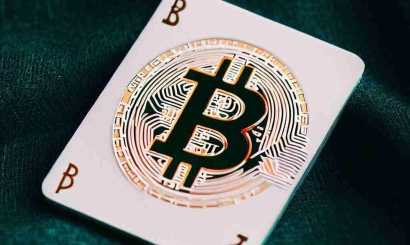Margin Trading. How not to lose money on the first trade?
Some participants of the investment world compare margin trading to casino.
The comparison of margin trading and casino trading takes place if a trader uses x100 leverage and opens a position for the entire capital at once. In most cases, under such circumstances it is possible to lose money and only in rare cases it is possible to earn money. In general, the concept of "casino" sounds even insulting to traders, who earn money using margin trading. The fact is that professional traders do not try to guess the direction of price movement, but create their own trading strategies based on some concept or observation and work with risks. For example, certain candlestick patterns, various indicators, price behavior after certain economic events, breakdowns of price levels and so on.
Trading, like investing, is all about dealing with risk in the first place. There is risk management and money management for this purpose. For example, a user of a crypto exchange chooses an asset to trade based on some fundamental events, counting on its growth. Then determines the point of entry and closing a position, both in profit and loss, limiting it in case of an error. Then he determines the percentage of capital which he is ready to use and the size of the leverage. No successful trader enters a position with x100 leverage, even if they are quite sure of a future rise or fall in price. The risk of loss is too high.
Leverage is a tool for large traders and a trap for small traders:
● Large traders use it to increase their positions or to hedge in certain situations. Simply put, they use it as one of the tools, but far from the main one.
Small traders use it to boost their deposits and try to get rich instantly. That is their main mistake.
As you know, if someone has earned on the market, someone else has lost. It is a natural process of capital flow from one people to another. With a lot of capital, large bidders can influence the price, sell and buy where it is profitable for them.
At the same time, small participants are forced to make do with chance. No matter how hard they try, there will always be larger participants in the market who have a position which is the opposite of yours. The more leverage a small trader has, the faster his capital will pass into the hands of the big players.
Conduct an experiment. In any trading terminal that has a demo account, try opening a position with x100 leverage. In some cases, when the market is volatile, a Margin Call may occur within a minute, or even earlier. Have no illusions - a position with x50 or x25 leverage is liquidated just as fast.
Try to trade successfully on a demo account for at least a month. In order not to quickly lose capital, you will need to maintain a balance between the amount of leverage and the percentage of your equity, with which you enter the position. Let me remind you that leverage is a tool which it is important to learn how to use. You can enter into a trade with x5 leverage using 20% of your capital, or with x50 leverage using 1% of your capital. Form a strategy, manage your risks, in that case there is a chance of success, otherwise you will turn trading into a casino yourself.
To be successful in trading, including leveraged trading, you will need to learn a lot. After years of practice and forming your own trading strategy, you may start making money. Don't forget that not everyone can succeed in trading.
The best choice for beginners is simple trading on the spot market. Even with elements of speculative trading, i.e. trading, but without using leverage. Very quickly, without super risks you will realize that speculative trading (even 1 to 1) is not the easiest way to earn. Catching the moment when you can sell or buy an asset is very difficult.
Accordingly, you will quickly come to the conclusion that it is better to study assets and buy them for the medium or long term in the moments of drawdown or after a price collapse. So-called holders, who bought and held, can make a fortune in a few years. So-called traders, who trade with high leverage and no strategy, lose all their money within a few months. That's the difference.
- "Gandalf lost." What is known about the case against Bitzlato
- BitKeep will begin compensating victims of the $8 million hack starting in February
- OKX says it is "100% clean" in securing customer assets
- The Exit Point. Why crypto traders began to fix profits
- El Salvador's president accused the world's leading media of lying
- Binance will launch a tool to prevent market manipulation




_410x245_00e.webp)


